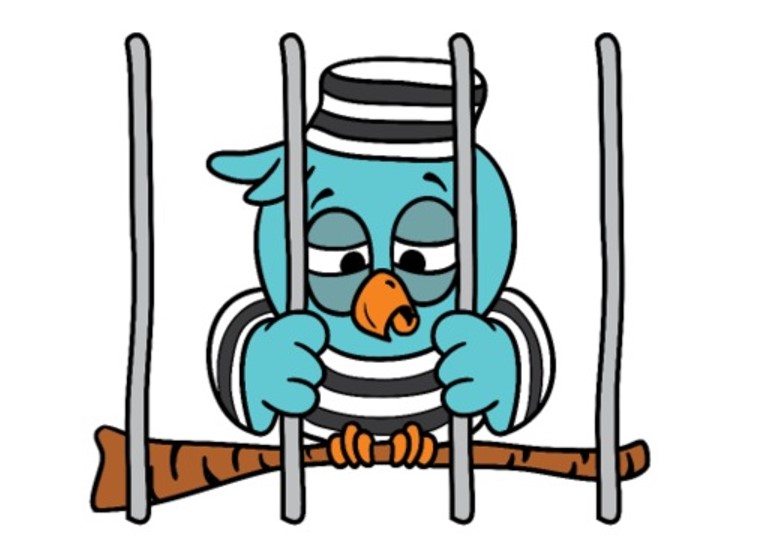
Photo: spreadshirt.ca
By Michael O’Neill
“Tonight, there’s gonna be a jailbreak somewhere in the town.”
No need to panic. No deranged killers” broke out of Millhaven maximum security”, despite what the late Gord Downie and the Tragically Hip say. And neither is the Canadian parole board transferring a homicidal maniac from Millhaven to the equivalent of a healing tent. Like that would ever happen. Err, right, Mr. Mendicino?
However, the Loonie didn’t get the memo. It is partying like it’s August 2022 and is kicking down doors as it tries to break on through to the other side.
It was just fourteen months ago that Fed Chair Jerome Powell ignited a wildfire of US dollar demand when he kiboshed the notion that the FOMC would cut interest rates as early as January 2023.
In his speech at the Jackson Hole Symposium, he said, “In current circumstances, with inflation running far above 2 percent and the labor market extremely tight, estimates of longer-run neutral are not a place to stop or pause,” then added, “Restoring price stability will likely require maintaining a restrictive policy stance for some time. The historical record cautions strongly against prematurely loosening policy.”

Photo: HDclipart.com
He repeated iterations of that theme at every meeting, speech, and press conference since then, right up to and including in his testimony to the House Financial Services Committee today. That’s when he said, “Nonetheless, inflation pressures continue to run high, and the process of getting inflation back down to 2 percent has a long way to go.”
USDCAD soared following the Jackson Hole meeting, rising from a pre-speech level of 1.2910 to 1.3970 less than two months later and it never got below 1.3230 until the middle of June.
“But times, they are a-changing.” USDCAD is gnawing away at the last layer of support in the 1.3000 area before free-falling to 1.2490.
What has changed?
Fourteen months ago, US and Canadian inflation appeared to be rising unabated. The 225 bps of Fed and Bank of Canada rate hikes between March and August merely lifted interest rates from zero/ultra-low to very low.
At the same time, US CPI peaked at 9.1% in June 2022 and dropped to 4.0% by May 2023. Canada enjoyed a similar experience with CPI peaking at 8.1% last June and falling to 4.4% in April.
Inflation may not be tamed, but policymakers sure have the Number of the Beast. It is far less wild, and that suggests that the Fed may be less aggressive with rate hikes.
The odds for another 25 bp rate hike by the Fed in July are about 75%, which would boost fed funds to 5.50%. Traders are betting that it will be the last hike for this cycle with the first rate cut expected in January 2024.
The Bank of Canada is in a different boat. It surprised the market with a 25 basis point (bp) rate hike on June 7, and many analysts expect a similar result on July 12.
The BoC Summary of Deliberations (SoD) from that meeting suggested the decision to raise rates was a close call. However, the Governing Council concluded that “members were of the view that, with the resurgence in household spending growth, the pickup in consumer confidence, and the slowing in disinflationary momentum, monetary policy did not look to be sufficiently restrictive.”
USDCAD is under pressure due to the belief that Fed funds are close to the terminal rate, while the BoC will need to continue tightening.
Oil price outlook:
USDCAD is seeing some downward pressure from crude. West Texas Intermediate (WTI) oil is grinding out gains and has risen over 8% since June 15. China is on the verge of announcing another major fiscal stimulus program to jumpstart its flagging economy, which will bolster demand for crude when the details are announced. That speculation has put a floor under prices, while the previously announced Saudi Arabia oil production cut and ongoing sanctions on Russian crude point to higher prices.
Market sentiment:
It would be a mistake to believe that USDCAD value is determined solely by Canadian fiscal and monetary policies. They play a role, but as long as the government avoids policies like Turkey’s disastrous “Erdogan-omics,” Washington and the Federal Reserve are the “master of puppets.” If the market believes the Fed tightening cycle is at an end while other central banks continue to tighten, the US dollar will retreat against the major G-10 currencies and the Canadian dollar.
In addition, a Chinese stimulus program will boost global risk sentiment and lift Wall Street stocks. A rising S&P 500 index will put added pressure on USDCAD.
USDCAD technicals:
USDCAD has been on a Highway to Hell since topping out at 1.3850 in March before accelerating lower on the break of support at 1.3360. The move below 1.3230 (38.2% Fibonacci retracement of June 2021-October 22 range) suggests a test of the 50% level at 1.3000, then additional losses to 1.2490. It will not be a one-way move as momentum indicators suggest USDCAD is oversold.
USDCAD technical traders listening to classic rock radio and looking at patterns on the daily chart may be singing “I’m in love with the shape of you” as they position for a Loonie breakout.





